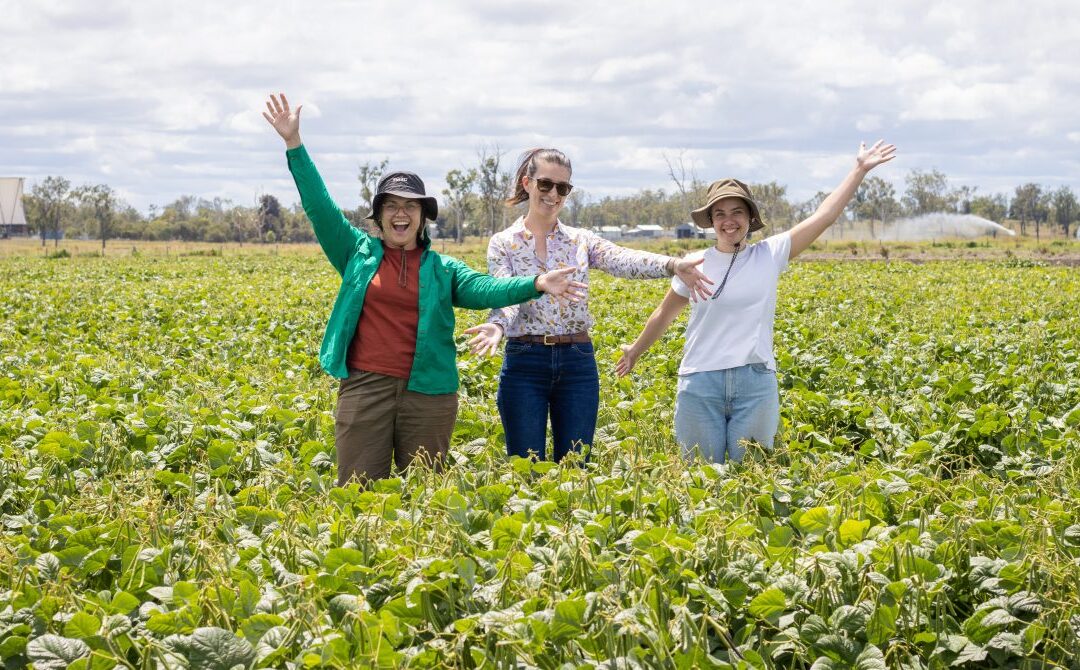A MUNGBEAN field trial at The University of Queensland’s Gatton campus is shedding light on improving yield stability of the high-value crop, currently selling for over A$1300 a tonne.
According to Millicent Smith, a lecturer in crop physiology from the Queensland Alliance for Agriculture and Food Innovation and the School of Agriculture and Food Science, the research was aimed at further understanding the physiology of mungbean.
“Mungbean is a really important pulse crop for the northern grain-growing region of Australia, providing economic and agronomic benefits to growers,” Dr Smith said.
“We’re trying to understand how the canopy develops and particularly how it intercepts light, and how the seed size and number of pods on the plant interact to influence yield.
“These physiological traits seem to influence the yield achieved.
“We can share new knowledge with agronomists and plant breeders who can then develop better management strategies and better varieties for growers.”
The research is supported through two complementary projects to understand complex crop dynamics.
“Our research focused on understanding how the canopy and pods develop, is supported by the International Mungbean Improvement Network, funded by Australian Centre for International Agricultural Research.
“In addition, the Grains Research and Development Corporation is supporting the development of innovative approaches that allow us to increase the number of plots that can be measured in the paddock across the entire crop growth cycle.”
Dr Smith’s team includes GRDC PhD scholar Shanice Van Haeften, who is using a Remotely Piloted Aircraft (RPA) fitted with a multispectral camera to measure the canopy development of the trial.
“By flying the RPA across the paddock, we can gain new insight into the crop that we can’t see with the naked eye,” she said.
She said new tools and knowledge will be shared with mungbean breeders in Australia and around the world through the International Mungbean Improvement Network to develop improved varieties for the future.
“We work closely with the National Mungbean Improvement Program led by the Queensland Department of Agriculture and Fisheries to ensure our research delivers outcomes that benefit the Australian mungbean breeding program.
“There are very few summer legume options for growers and so we’re trying to make mungbean a better alternative season after season.
“It’s about making mungbean a more reliable crop that provides good economic returns year in, year out.”
Source: QAAFI
Source: Grain Central

